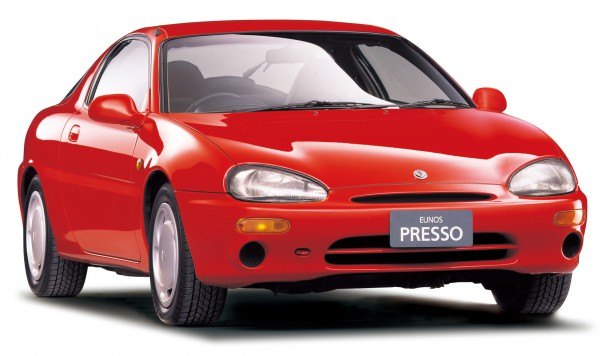Ask The Editor: What Happened to Small-Displacement V6s?

Reader Brian Tai writes:
I’ve been an enthusiast and part-time DIYer for years now. I love to learn about everything automotive.
My question for you: why are cars with small engines always inline-fours? Why do manufacturers not put 2.0-liter V6s into cars? I know they don’t usually use big displacement inline-fours because of NVH issues, but what about the other way around?
Thank you for your question, Brian. I’ve been wondering about this very aspect of engineering for a while and you just gave me enough push to go sniffing for answers.
The current landscape of modern, non-pushrod, direct-injection engines is one of patterns. Chances are that the four-cylinder engine humming away under the hood of your Generic Corp. Compact displaces the same volume as a large bottle of Coke and has all the aural bliss of a vuvuzela filled with stadium hot dogs. Add two cylinders and arrange them all in two rows of three, and that engine is more likely to displace 3.0 liters today than it ever has in its history. Add two more cylinders and you see the growing crop of 4.0-liter V8s. The pattern: 500 cubic centimeter cylinders.
C/D tackled this topic not too long ago. 500 ccs per cylinder provides for a nice blend between efficiency and power, especially when paired with turbocharging and a number of other whizbang technologies. Additionally, with global taxation schemes aimed at vehicles with certain displacements — such as the additional tax paid on vehicles with engines that displace over 1.5 liters in China — it makes more sense to build engines with half-liter cylinders.
However, you might remember the small K-series motors from Mazda. The K8 V6 displaced a whopping 1.8 liters in the MX-3. Even the bigger V6s from Mazda of that generation, which many tuners wedge into the MX-3 in order to boost performance, measure in at a paltry 2.5 liters.
So, we asked Mazda: Why aren’t small displacement engines still a thing? The answer was simple.
“Making a piston costs about the same amount, whether it’s a big piston or a little one,” explained Mazda engineer Dave Coleman. “Boring a cylinder costs about the same whether it’s big or small. Casting and machining two three-cylinder heads costs almost twice as much as one four-cylinder head. Making four variable cam timing actuators costs exactly twice as much as making two. Six injectors costs 50 percent more than four.”
When you’re developing a car to a price, that overall price and profit is directly related to the amount it costs to build said car. Why build a V6 if you can engineer a four-cylinder engine with the same displacement and similar output at a lesser overall cost?
And to drive the point home even further, there’s not much practical point in building a V6, as they “take up more space than four-cylinders, making a bigger, heavier car,” continued Coleman.
So, if you are one of those owners of a Mazda MX-3 with its diminutive 1.8-liter V6, you could be sitting on a historical artifact for years to come.
[Image: Mazda]

More by Mark Stevenson
Latest Car Reviews
Read moreLatest Product Reviews
Read moreRecent Comments
- Jrhurren Worked in Detroit 18 years, live 20 minutes away. Ren Cen is a gem, but a very terrible design inside. I’m surprised GM stuck it out as long as they did there.
- Carson D I thought that this was going to be a comparison of BFGoodrich's different truck tires.
- Tassos Jong-iL North Korea is saving pokemon cards and amibos to buy GM in 10 years, we hope.
- Formula m Same as Ford, withholding billions in development because they want to rearrange the furniture.
- EV-Guy I would care more about the Detroit downtown core. Who else would possibly be able to occupy this space? GM bought this complex - correct? If they can't fill it, how do they find tenants that can? Is the plan to just tear it down and sell to developers?


































Comments
Join the conversation
What happened to small displacement V6's? The same thing that happened to high-revving 4-bangers, and turbocharged engines that were tuned for power instead of fuel economy. Buyers were convinced by autojournos that these are "bad" characteristics to have in an engine. Perhaps they were too impatient to let an engine rev to the upper end of its power band or wait through the lag, but either way, they were described as peaky, laggy, and requiring too many gear changes to get the power you want. You dn't want that man! You want, lazy torque (never mind that all of these engines are wheezing at 6K now) disguised as a "fat" powerband. Imagine that, a lazy fat engine. Makes me regret selling every sport compact and hot hatch I ever owned.
quick update on cost being a main motivator here: Toyota recently released details on their 2016 WEC LMP1 car and it features a small (2.4L) V6 twin turbo. Noteworthy because LMP1 has pretty liberal engine regulations as far as cylinders, displacement, and configuration (Porsche won last year with 2.0 V-4, yes a V not inline 4). Audi is sticking by their 3.7 V-6 TDI. Point is, racing doesn't award points for which engine sounds the best or runs smoothest (otherwise Toyota's glorious howling normally aspirated V8 would've kept going); it rewards the engine that offers the most performance with the best efficiency, and Toyota clearly believes the small displacement V-6 offers that. If a 4 cylinder of similar displacement would've been the better powertrain, they would've gone for it. The one that top level works LMP1 projects don't really care about? Cost.